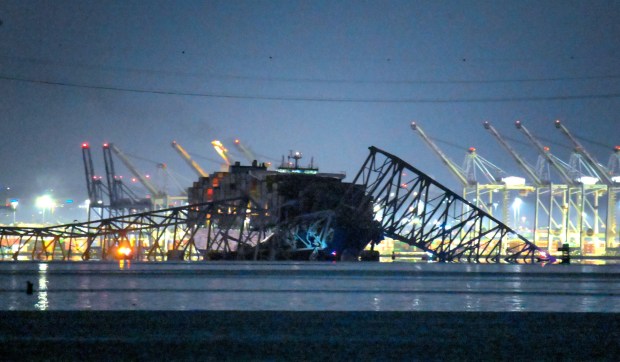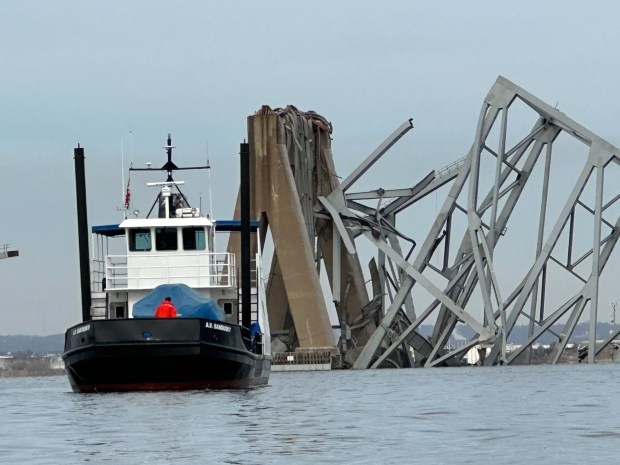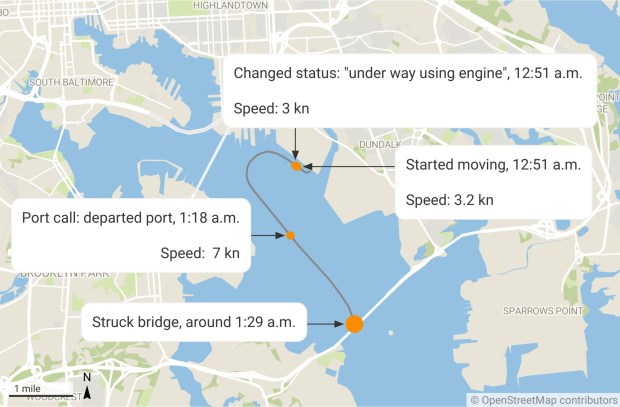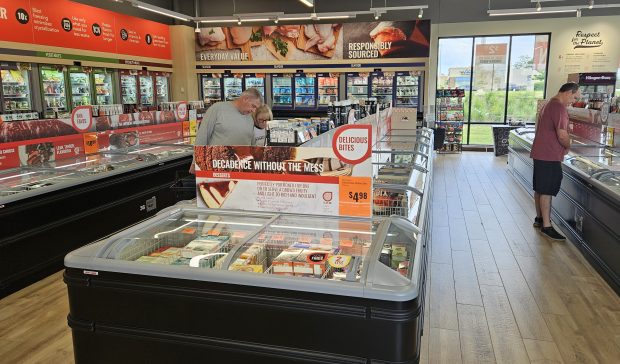Miguel Luna headed to his construction job around 6:30 p.m. Monday, where he and six other workers filled potholes overnight on the towering Francis Scott Key Bridge.
A 22-person Indian crew aboard the Dali, a hulking cargo ship involved in an accident in Belgian waters eight years earlier, prepared to set off on a 28-day voyage to Sri Lanka after it spent the weekend in Baltimore. Two Maryland pilots boarded the ship early Tuesday to navigate the 984-foot vessel out of the harbor. It departed the Port of Baltimore’s Seagirt Marine Terminal around 12:39 a.m.
Over the next 50 minutes it would experience power and mechanical failures until it smashed into a support column for the Francis Scott Key Bridge, sending most of the 1.6-mile structure crumbling into the Patapsco River. The bodies of two construction workers were recovered Wednesday; Luna and three other workers are presumed dead. Two people survived.
Dispatch audio, Coast Guard reports, a National Transportation Safety Board summary of data from the ship’s voyage data recorder and video of the disaster offer a minute-by-minute account of the moments before and after the bridge’s collapse:
12:51 a.m.: The Dali’s status is changed to “under way using engine” and its speed is recorded at about 3 knots on myshiptracking.com, a website that tracks ships’ locations via the Automatic Identification System, a technology used to avoid collisions.
1:09 a.m.: Two tugboats guiding the Dali leave once the ship turns to begin its departure out of the port waters.
1:18 a.m.: A port call for the departure of the Dali was recorded on myshiptracking.com. The ship was moving at a speed of 7 knots. Motorists traveling on Interstate 695, the Baltimore Beltway, cross the Key Bridge
1:24 a.m. to 1:26 a.m.: Dali appears to begin turning toward one of the vital bridge supports at a speed of around 8 knots, or about 9 mph.
1:24:59: The sounds of numerous alarms are recorded on the ship bridge’s audio. The ship’s power goes out, flickers partially back on a minute later, and goes out again by 1:26 a.m. Black smoke billows from the ship.
1:26:39: With the power outage likely impacting navigation, the pilot radios for a tug boat. A pilot association dispatcher, meanwhile, phones a Maryland Transportation Authority duty officer to report the ship’s loss of power.
1:27:04: The pilot orders the Dali to drop an anchor and issues steering commands. Cars and trucks continue to travel on the roadway.
1:27:05 a.m. to 1:29 a.m.: The pilot issues a mayday alert to the Coast Guard. Maryland Transportation Authority Police stop bridge traffic in both directions. A handful of vehicles cross the bridge as the Dali closes in on the bridge’s western steel support column.
“Hold all traffic on the Key Bridge. There’s a ship approaching that just lost their steering,” a dispatcher says.
1:27:53 a.m.
An officer asks whether a construction crew is working on the bridge.
“Just make sure no one’s on the bridge right now. I’m not sure what — there’s a crew up there. You might want to notify whoever the foreman is, see if we can get them off the bridge temporarily,” a dispatcher responds.
1:28:25 a.m.
A half minute later, an officer says he’ll grab the construction workers when backup arrives.
But there’s no time.
Traveling at a speed of just under 7 knots or about 8 mph, the ship rams into the bridge. The voyage data recorder captures what sounds like the collision at 1:29 a.m. The NTSB said Wednesday night that more analysis was needed to determine the precise time of impact.
An inspector contracted by the Maryland Transportation Authority who was standing on a section of the bridge that did not immediately collapse runs to safety at the end of the bridge.
Less than a minute after impact, the bridge shudders and folds. Six people, three passenger vehicles, one piece of construction equipment and one unidentified vehicle are thrown into the chilly water below. The pilot radios the Coast Guard about the collapse.
“The whole bridge just fell down,” a shocked transportation authority officer says. “Start … start whoever, everybody.”
1:29:27 a.m.
1:40 a.m.: Baltimore City fire and emergency medical units are dispatched to the Key Bridge for a report of a possible vehicle in the water.
1:44 a.m.: A second report over fire dispatch reports 13 members of a construction crew potentially in the water. Authorities believe six people were thrown into the water.
1:45 a.m.: Baltimore City and County fire rescue boats and a dive team are dispatched to the scene to search for the missing men. The Coast Guard deploys four boats and a helicopter to aid in the search. Responders use sonar and underwater drones.
1:46 a.m.: Someone asks the dispatcher for a more specific location; the dispatcher says the Coast Guard called it in and said it was off Fort Armistead Park.
1:50 a.m.: A dispatcher says police are reporting the “middle section of the bridge has collapsed into the water” and that there are “unknown amounts of people or vehicles in the water.” Beltway traffic is jammed.
1:51 a.m.: A boat launched from the Coast Guard’s Station Curtis Bay reaches the scene.
1:52 a.m.: Several police officers on eastbound 695 block traffic. A dispatcher says they will get as close to the bridge as possible.
“Be advised, the entire bridge, the entire Key Bridge is in the harbor,” a dispatcher says in disbelief.
2:30 a.m.: One of two survivors arrives at Shock Trauma and is released without being admitted. A second person rescued from the bridge declines medical treatment.
4 a.m.: Divers searching the 50-foot deep waters for vehicles or missing people are hindered by cold temperatures and murky water. The National Data Buoy Center reported water temperatures in that area to be about 49 degrees at 4 a.m. — a dangerously cold temperature.

12:30 p.m.: President Joe Biden gives a White House address on the Key Bridge disaster, pledging federal money to pay for its replacement.
“This is going to take some time,” Biden said. “But the people of Baltimore can count on us, though, to stick with it every step of the way until the port is reopened and the bridge is rebuilt.”

7:30 p.m.: Search-and-rescue efforts transition to recovery efforts, authorities announce at a news conference.




